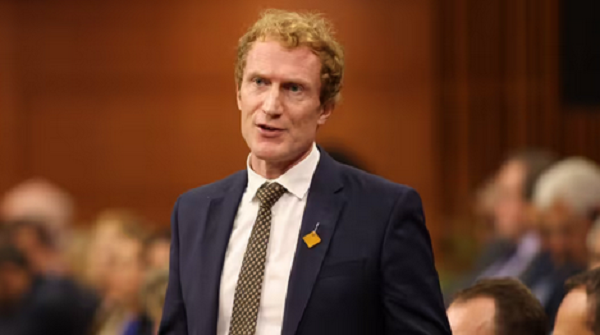Feds consider supporting provinces grappling with asylum seekers with more money
A spokesperson for Immigration Minister Marc Miller says his office hopes to have a plan within months to offer more support for provinces – not just Ontario and Quebec – that are grappling with rising numbers of people seeking asylum.
Aissa Diop, Mr. Miller’s director of communications, said the minister acknowledges the complaints made by premiers at their meeting last week in Halifax.
“We will keep having those conversations about how can we work collaboratively to make sure that asylum seekers feel supported, but provinces also feel supported,” she said.
Last week, B.C. Premier David Eby and Alberta Premier Danielle Smith complained they haven’t received any of the extra money Ottawa has given to Ontario and Quebec over the past year to aid in the resettlement of asylum seekers.
Federal data shows a record number of 143,575 people seeking asylum came to Canada last year, with the vast majority – 90 per cent – settling nearly equally in Quebec and Ontario.
While British Columbia, Alberta and Manitoba have had relatively fewer claims, this class of newcomer has increased by roughly double or even more in all three provinces during the first five months of the year compared to the same period last year.
Ms. Diop said Mr. Miller noted the premier’s anger over the funding gap and is committed to working with the provinces and territories “in the coming months” to better support them.
“When provinces receive asylum seekers, they are also front-liners in helping them settle down, so we acknowledge that,” Ms. Diop told The Globe and Mail.
Quebec Premier François Legault said it was unfair that most provinces receive nothing while Quebec was given $750-million from Ottawa this year to buttress its stressed social infrastructure.
“It would help if the federal government would give them at the same time some money to transfer asylum seekers to other territories or provinces,” he said.
Housing asylum seekers is a provincial responsibility, but the federal government has been paying for these newcomers to stay in hotels in Ontario and Quebec since the beginning of the pandemic because shelters in those provinces are full.
Ms. Diop stressed that the federal government cannot control when and where people show up to claim asylum in Canada and, once they do, Ottawa needs their consent to move them to another province and the agreement of that province.
At the close of the three-day premiers’ summit, only the leaders of Manitoba and Newfoundland and Labrador publicly offered to welcome asylum seekers who first land in Quebec and Ontario – as long as Ottawa pitches in with funding to transfer them.
Mr. Eby and Ms. Smith declined to show such support. Both said their housing markets and social services agencies are already bursting at the seams after recruiting and welcoming a record numbers of other immigrants in recent years.
Over the first five months of this year compared to the same span in 2023, B.C.’s number of asylum seekers nearly doubled to 4,390 and Alberta’s inflow more than tripled to 3,740 claimants, according to federal data.
“Our most recent total for last year was 180,000 new British Columbians,” Mr. Eby said last week, conflating overall immigration with the small number of asylum seekers when reporters asked about the issue.
“And that’s great and that’s exciting and it’s necessary, and it’s completely overwhelming.”
Mr. Eby’s office said although B.C. takes the third-most asylum seekers, neither the province nor any of its municipalities have received any federal funding, including any money from the $1.1-billion Interim Housing Assistance Program for cities and provinces to stop the newcomers from becoming homeless.
Ms. Diop, Mr. Miller’s spokesperson, said B.C. has not applied to this fund since 2019.
Ontario took in 40,240 asylum seekers between January and May, more than double the year prior. Quebec took in 28,165, compared to 26,220 last year.
Canada’s asylum claims dropped sharply after the end of March, 2023, when Ottawa struck a deal with the United States to turn away people trying to walk over an unofficial border crossing at Quebec’s Roxham Road, but they soon climbed back up, fuelled largely by more people flying into Montreal and Toronto and then claiming this status.
Sharry Aiken, an immigration scholar and law professor at Queen’s University in Kingston, said asylum seekers should not be scapegoated for further stressing any province’s housing market or filling its hospitals. She said overall immigration of permanent and temporary residents alike has grown significantly over the past three years.
“Perhaps there’s a degree of a lack of co-ordination in the various policy envelopes in government and it’s landed us where we are, which is a huge strains on public infrastructure, whether it’s education, health or housing,” Dr. Aiken said.
This article was first reported by The Globe and Mail












